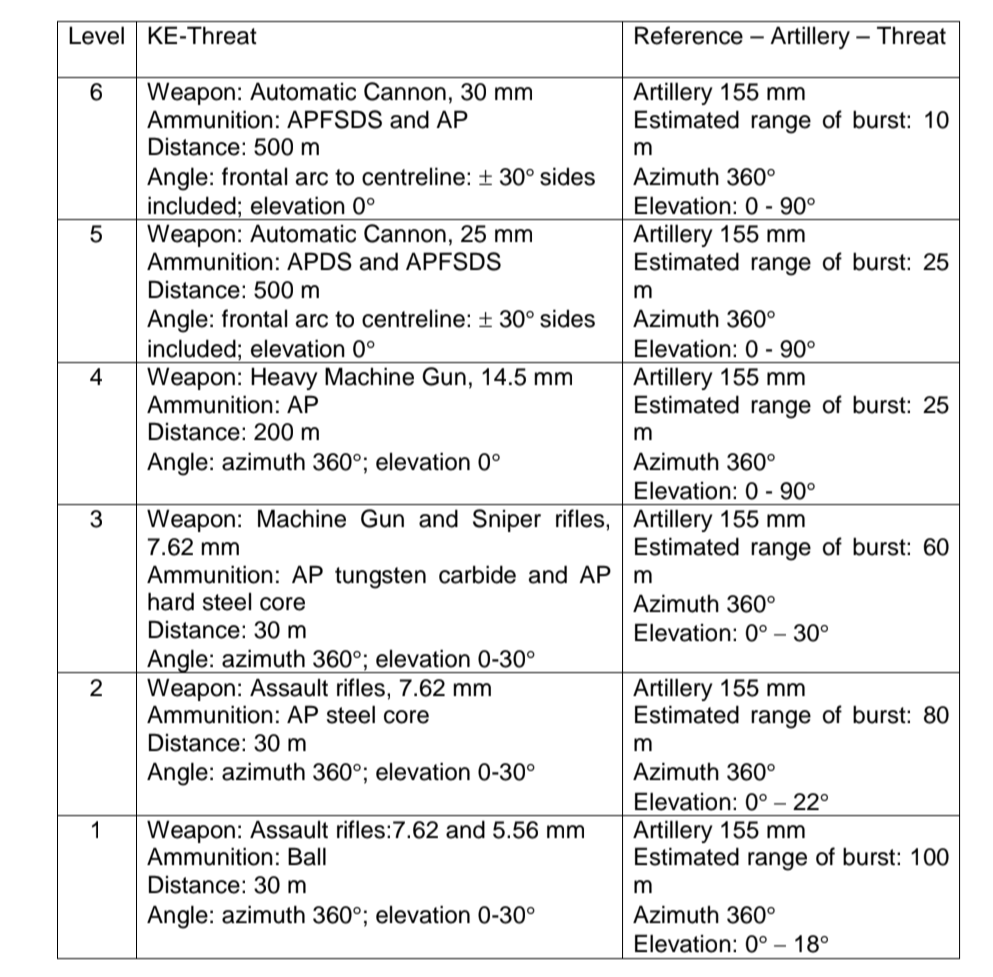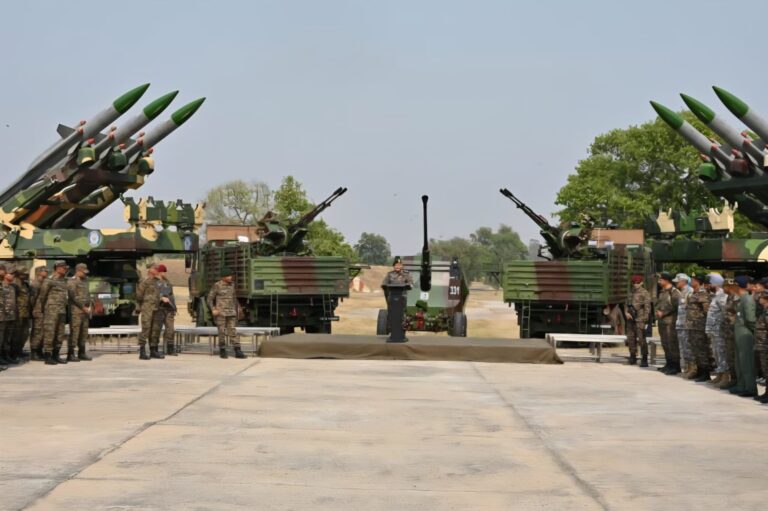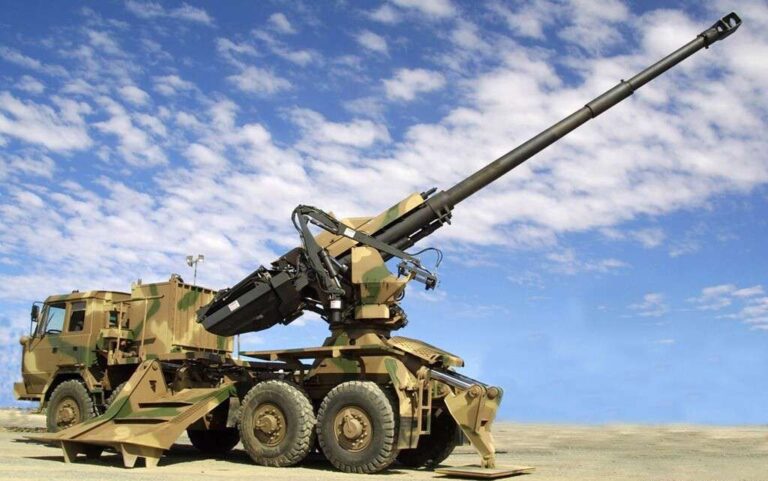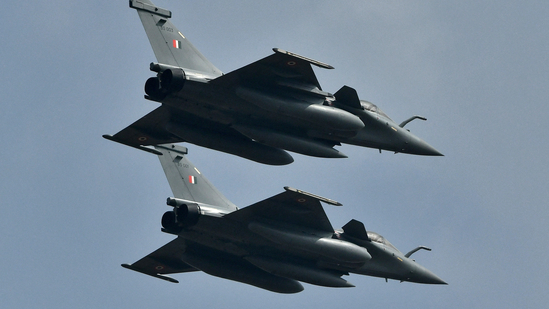NATO AEP-55 STANAG 4569 is a NATO Standardization Agreement covering the standards for the “Protection Levels for Occupants of Logistic and Light Armored Vehicles”.
The standard covers strikes from kinetic energy, artillery and IED blasts.
Threats to be considered are small and medium caliber kinetic energy ballistic projectiles and fragment simulation piercings representing fragments of artillery shells, as defined in that standard.
This process includes standard techniques and repeatable test methods for the required vehicle sensitive area assessment as well as the ballistic resistance of vehicle armor components. Mine protection qualification and acceptance tests are done separately.
The ballistic methods described in this standardization agreement are equally applicable to ballistic tests on various target systems, including single target plates, fully engineered targets and vehicle targets. Ballistic tests are performed under the impact conditions described in the standard with the specified threat ammunition. These tests should be performed in a test range approved in legal regulations.
The acceptance process used to establish the protection level of a defined vehicle protection system consists of four consecutive stages:
Stage 1: Test plan definition.
Stage 2: The main areas are ballistic assessment.
Stage 3: Ballistic assessment of structural weak areas.
Stage 4: Sensitive area assessment and conservation assessment.
Depending on the vehicle category and protection requirements, the level of protection is assigned to one of six levels. Higher levels correspond to increased protection against projectiles (KE threats) and artillery fire. A well thought out approach to material selection, mounting and interfaces is essential to meet the high standards of STANAG 4569 and ensure optimum protection.
Follow us on X for such informative posts
https://x.com/NewsIADN























